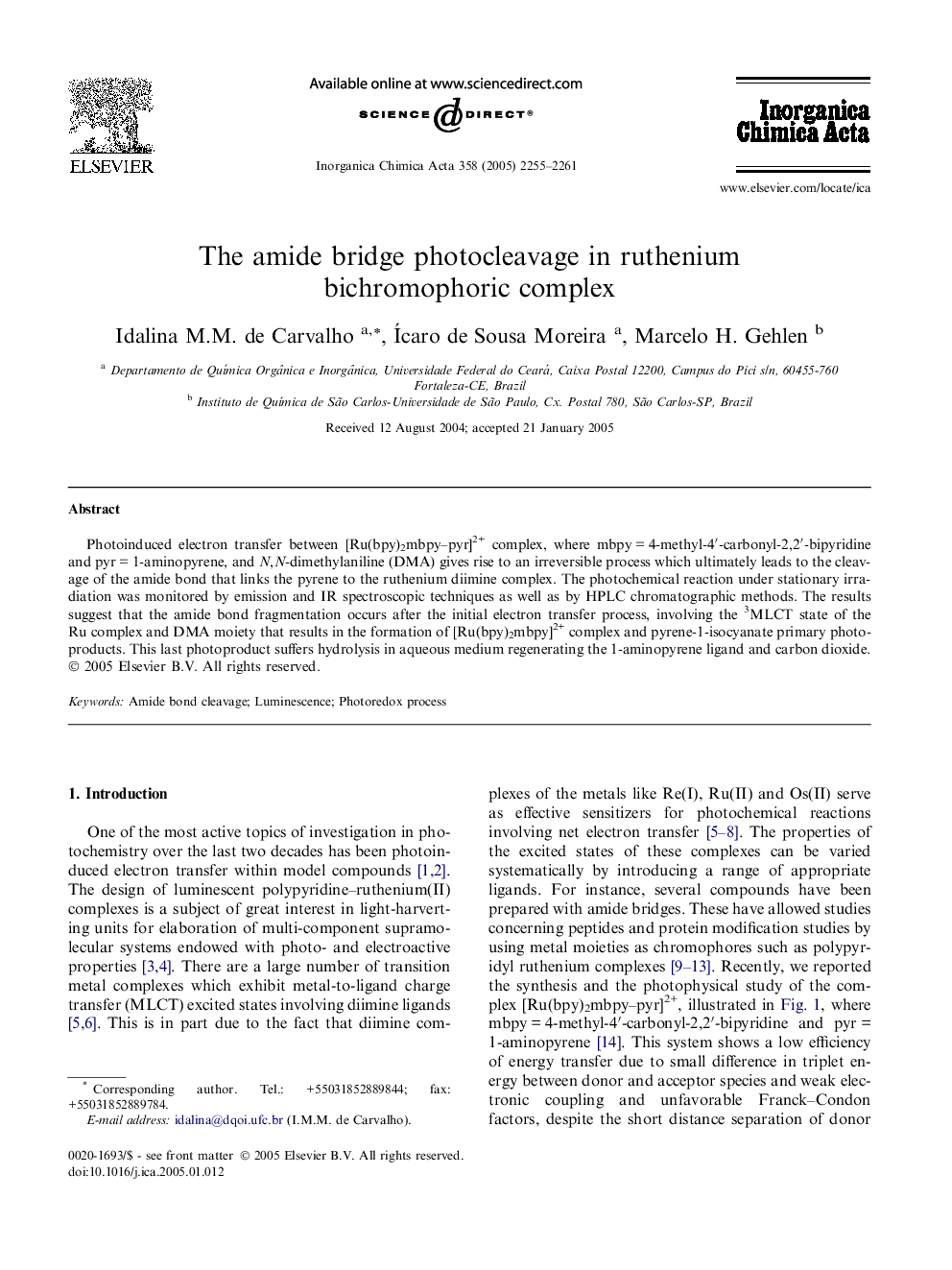| Article ID | Journal | Published Year | Pages | File Type |
|---|---|---|---|---|
| 1308574 | Inorganica Chimica Acta | 2005 | 7 Pages |
Photoinduced electron transfer between [Ru(bpy)2mbpy–pyr]2+ complex, where mbpy = 4-methyl-4′-carbonyl-2,2′-bipyridine and pyr = 1-aminopyrene, and N,N-dimethylaniline (DMA) gives rise to an irreversible process which ultimately leads to the cleavage of the amide bond that links the pyrene to the ruthenium diimine complex. The photochemical reaction under stationary irradiation was monitored by emission and IR spectroscopic techniques as well as by HPLC chromatographic methods. The results suggest that the amide bond fragmentation occurs after the initial electron transfer process, involving the 3MLCT state of the Ru complex and DMA moiety that results in the formation of [Ru(bpy)2mbpy]2+ complex and pyrene-1-isocyanate primary photoproducts. This last photoproduct suffers hydrolysis in aqueous medium regenerating the 1-aminopyrene ligand and carbon dioxide.
Graphical abstractPhotoinduced electron transfer between [Ru(bpy)2mbpy–pyr]2+ and N,N-dimethylaniline originates an irreversible process, leading to the cleavage of the amide bridge. The amide bond fragmentation occurs after the initial electron transfer process, involving the 3MLCT state of the Ru complex and DMA moiety forming [Ru(bpy)2mbpy]2+ and pyrene-1-isocyanate photoproducts. The last species suffers hydrolysis in aqueous medium regenerating the 1-aminopyrene ligand and carbon dioxide.Figure optionsDownload full-size imageDownload as PowerPoint slide
